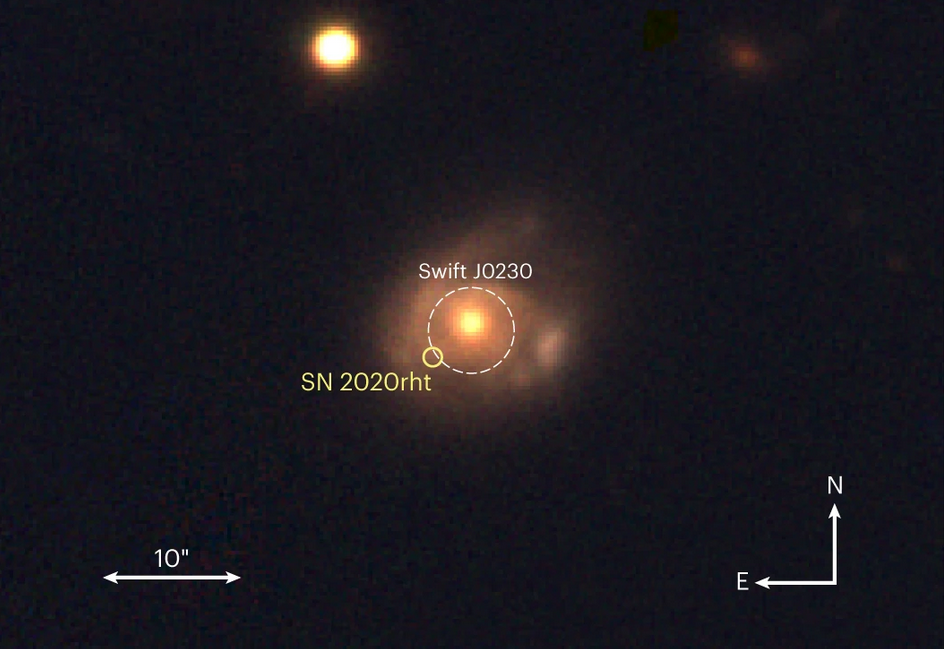A tidal disruption event (or as it’s well known as “TDE”) is an astronomical phenomenon that happens when a star passes sufficiently close to a supermassive black hole and the enormous gravitational force (tidal force) of the black hole pulls stellar material. In such a case, a small portion of the star’s mass can be captured into the accretion disk around the black hole, resulting in a temporary flare of electromagnetic radiation as matter in the disk is consumed by the black hole.

If the star is in an eccentric orbit around the black hole, every time it passes to the closest point to the black hole loses material and what we see from the Earth is a repetitive pattern. This periodic signal depends on the mass of the central black hole and the type of the star. Till now, astronomers have found two types of these TDEs. In the first case, using X-ray images, they found some TDEs that have a period of several hours. A possible scenario to explain this short-scale period is a white dwarf orbiting a black hole that has about 200.000 times the mass of our Sun. In the second case, astronomers observing the nigh sky with optical telescopes found TDEs with a period of more than 100 days. These are believed to be main-sequence stars (similar to our Sun) orbiting black holes with mass of about ten millions the Sun’s mass. No clear connection between these two classes has been made so far.
However, in a recent study that is partially supported by the AHEAD2020 project, a research team led by Dr. Philip Evans discovered an X-ray TDE named J0230 that shows periodic flares with a period of weeks. This discovery was made possible by the rapid identification, dissemination and follow-up of an X-ray transient found by the X-ray Swift telescope.

They propose that this system bridges the two existing classes outlined above. So, Swift J0230 represents an intermediate class of system, which is consistent with a main-sequence star orbiting a modest-mass black hole. Every time the star’s orbit brings it close to the black hole’s gravitational pull, it loses material equivalent to three Earth masses. The intense heat generated by this process – somewhere around 2 million °C – releases an enormous amount of X-rays that are captured by the Swift satellite.
The results of this work have been published in Nature Astronomy and also covered by the #CORDIS journalists with an article that can be found in the CORDIS official page and has been translated in several languages!
